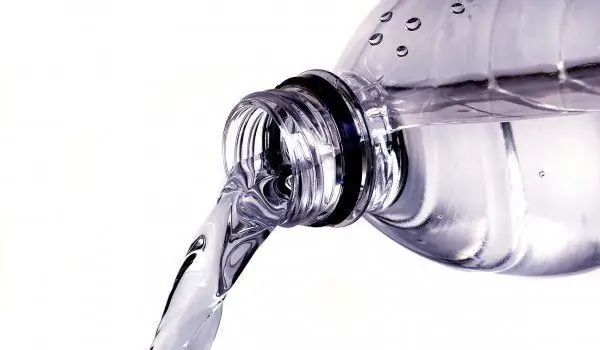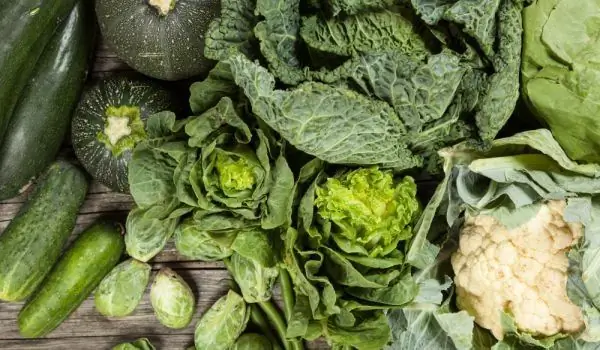2025 Author: Jasmine Walkman | [email protected]. Last modified: 2025-01-23 10:18
Absolutely unknowingly by most people, we are surrounded by different types and shapes of plastic tools. If we look around, we will notice that the envelopes, most cooking and beauty appliances, even our toothbrush are made of plastic.
Each plastic product must have a triangle with a certain number in it - from 1 to 7. This is a symbol for recycling and shows exactly what plastic is used and how to recycle after use.
Here are the common types of plastics used in everyday life, their main characteristics, as well as the extent to which certain plastics are harmful:

Number 1 - polyethylene terephthalate (PET or PETE). It is used mainly in the production of bottles for mineral water, carbonated and soft drinks, cough syrups, adhesive tape, biscuit packaging, polyester fibers.
Number 2 - high density polyethylene (HDPE) - Again for bottles, shopping bags, freezer bags, milk bottles, irrigation pipelines for agricultural products, waste bins, imitation wood, boxes for ice cream and juices, packaging for shampoo and detergents, mineral water caps, etc.
Number 3 - polyvinyl chloride (V or PVC) - Mainly in the manufacture of bottles for storage of non-food products, packaging for cosmetics, blisters, insulation of electrical appliances, pipelines, sewers, fences, windows, flooring.

Number 4 - low density polyethylene (PELD or LDPE) - Represents low density polyethylene and is widely used in the manufacture of disposable bags, various containers, dispensers for liquid soaps, soft bottles, shampoo packaging, detergents, etc., household foil, cosmetic packaging, laboratory equipment, etc.
Number 5 - polypropylene (PP) - Mostly for straws, dishes for microwave ovens, garden plastics, cups, food containers, household utensils, packaging of salads, biscuits and more. confectionery and pasta, buckets for yogurt and fruit milks, diapers.
Number 6 - polystyrene (PS) - Disposable coffee cups, home food boxes, flower pots, toys, video and audio cassettes, ashtrays, ventilation pipes, CD / DVD boxes, imitation glass cups, video and audio cassettes, and others.
6.1. - polystyrene (PS-E) - A subspecies from which foam cups for hot drinks, containers for hot food, protection against breakage of fine elements are produced.

Number 7 - other (OTHER or O) - This type of plastic is used for the production of baby bottles, reusable water bottles, food storage boxes, medical packaging.
Number 9 or ABS - Mostly in the production of monitors, TV cases, coffee machines, mobile phones, most computer components.
There are a number of other types used in the production of more specific products.
Of these, the ones that must be avoided are numbers 3 (PVC), 6 (PS) and 7 (PC). The emollients they contain are called "ptalates" and affect a person's hormonal balance. During the production of these packages, dioxin is released, which is a powerful carcinogen and in addition causes hormonal abnormalities.
Perhaps the most dangerous is number 6 - polystyrene. In our country, however, even well-known brands of yogurt are distributed in plastic buckets made of this material. Most toys are made of PVC plastic, which makes them potentially dangerous for children.
Recommended:
Do Not Put Hot Food In Plastic Containers! See Why

In recent years, more and more people are choosing to bring lunch to the office instead of choosing dishes of dubious origin and unclear quality of ingredients. Along with this solution, however, come some problems - how to choose the most appropriate vessel that is safe, comfortable and light enough.
Plastic Bottles And Containers Are Extremely Harmful

According to German scientists, plastic bottles and containers are extremely harmful to health. Studies have found that the water from plastic bottles contains a substance that is very harmful to the human body. In smaller amounts, this substance, called an antinomy, can cause depression and nausea, and in larger amounts, it can lead to death.
Do You Store Vegetables In Plastic Bags? That's Why You Have To Stop

Despite all the warnings about how harmful plastic bags are to the environment, most of us still use them. They are cheap, easy to use and easily accessible. In reality, they have become so much a part of our daily lives that shopping and storing products seems impossible without them.
You Need To Know This If You Are Cooking With Alcohol Or Flambéing

The purpose of cooking dishes with alcohol is to keep the taste and aroma of the drink after it has evaporated. It is very important not to use cheap wine, but to add good and aromatic wine. Remember: - In a main dish, which is enough for 6 people, put 200 ml of wine or beer;
Are You A Fan Of Sirens? You Need To Know That

1. Buy as much cheese as you will use in a week, because once cut, it begins to deteriorate; 2. Store soft cheeses in this area of the refrigerator where the lowest temperature is maintained. After opening it is good to be used within 3-4 days;

